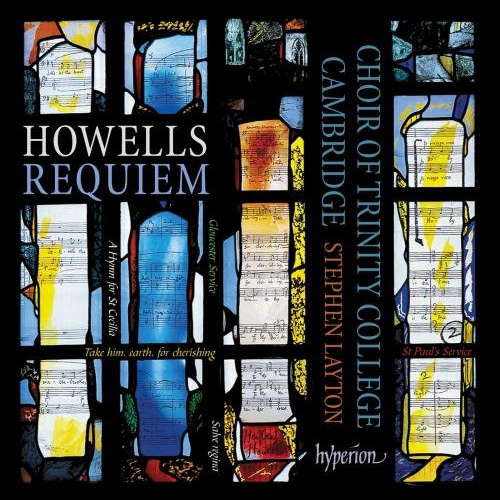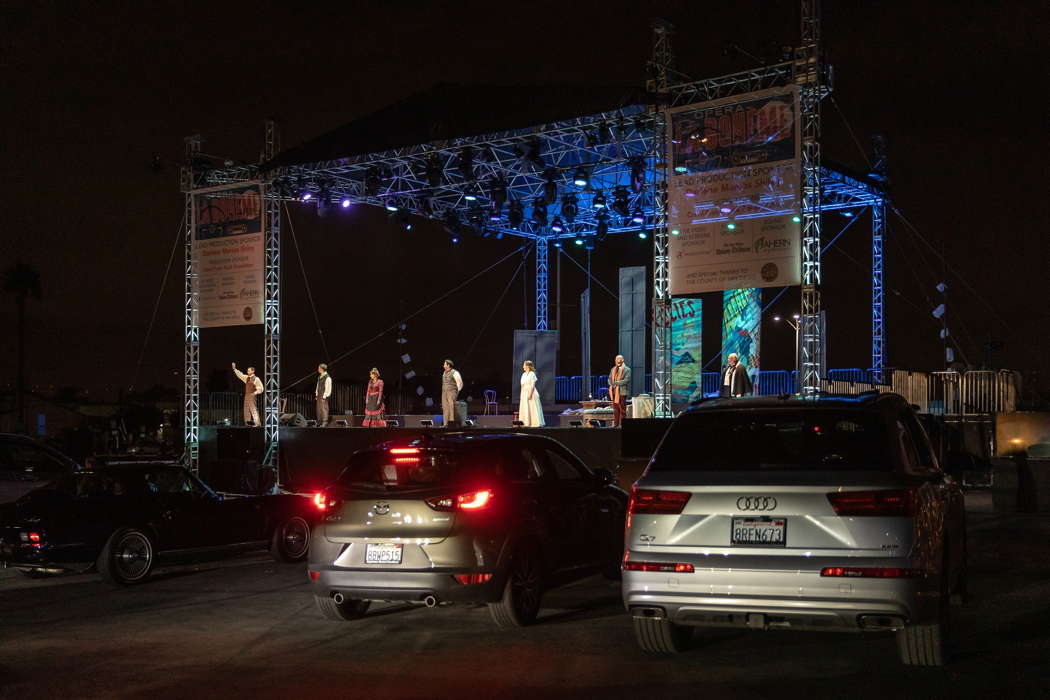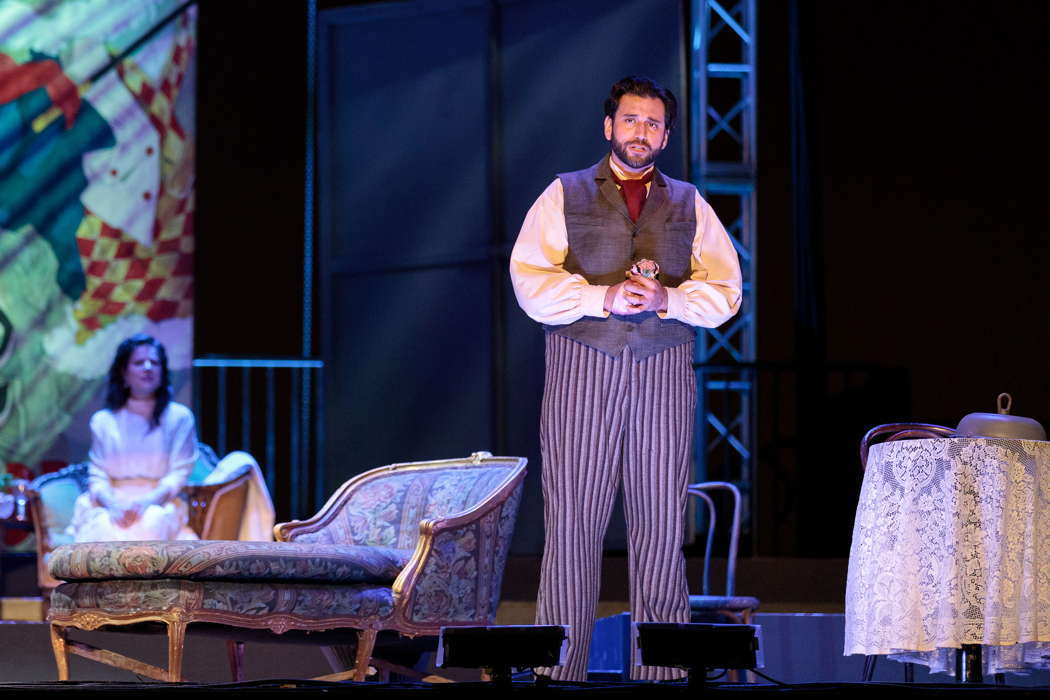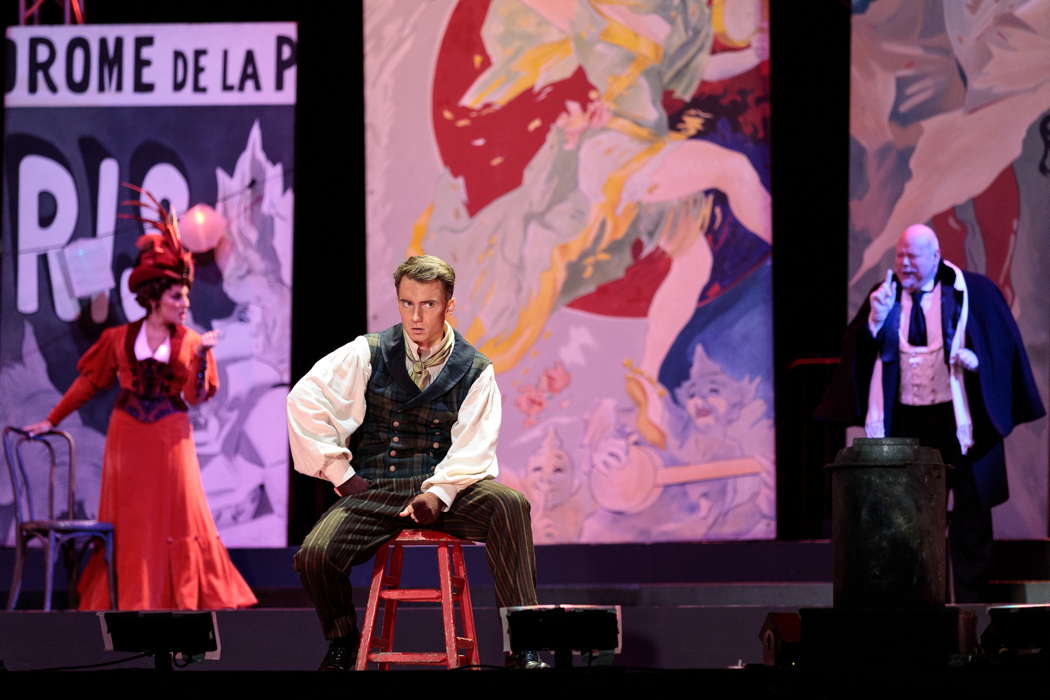 FEEDBACK: She said WHAT? Read what people think about our Classical Music Daily features, and have your say!
FEEDBACK: She said WHAT? Read what people think about our Classical Music Daily features, and have your say!
 SPONSORED: CD Spotlight. Beautifully Apt - Choral music by Herbert Howells, heard by Robert Anderson.
SPONSORED: CD Spotlight. Beautifully Apt - Choral music by Herbert Howells, heard by Robert Anderson.
All sponsored features >>
- Assembly Rooms
- Wolf-Ferrari
- Antoni Wit
- Opera Leipzig
- Sir Roger Norrington
- Kaikhosru Shapurji Sorabji
- Fanny Hensel: Unter des Laudbachs Hut
- Peter Gilbert: Neñia (Canción Fúnebre)
A Nuanced, Idiomatic Portrayal
San Diego Opera's first drive-in opera - 'La bohème', appreciated by MARIA NOCKIN
On Tuesday 27 October 2020, I attended La bohème, San Diego Opera's first drive-in opera. It was my first drive-in anything and it was spectacular. I guess a great deal of the emotional impact was the result of not having been to an actual performance of anything since March. By the end of the performance we realized that an immense hunger for opera had brought opera lovers to the Pechanga Arena Parking Lot. Deafening applause, the sound of hundreds of horns and blinding light flashes began the moment the music stopped.

A scene from San Diego Opera's drive-in La bohème. Photo © 2020 Karli Cadel
The opera was performed on a raised stage and broadcast to two screens. As in many opera houses, audience members could see closeups on the screen as well as the singers on the actual stage. My companion and I arrived two hours early so as to get front line places. Then we read and reread the directions as to how to tune in the FM radio to hear the opera. Director of Education and Outreach for San Diego Opera Nicholas Reveles gave a short introduction before the opera began as he normally would in the opera house. Each of the leading singers spoke of getting through months of pandemic and quarantine with no possibilities offered to perform safely. For them, the pandemic has been both an artistic and economic disaster.
Drive-in performances may soon become more common because they are safe, and when careful attention is paid to singers' distances from each other onstage, they provide viable artistic solutions. These distances have a major effect on the stage direction, however. Singers must be at least fifteen feet apart when singing to each other. Camera angles can minimize the intervening space to some degree, and director Keturah Stickann took full advantage of it, but since the tenor and the soprano were not a couple in real life, they could never embrace. Stickann solved that problem by having Rodolfo tell the story as a memory from years earlier. Not having a chorus for the Parisian Christmas Eve street scene took away the opera's lighter moments, however, and streamlined the movement of the ninety-minute opera toward it's inevitable tragic end. Audience members could weep for their own lost loved ones as well as the heroine.
Joshua Guerrero has always been a good tenor; now, his voice has matured and acquired a bit of welcome 'heft' to it. On Tuesday night his performance was close to perfection. Nobility of sound, colors, nuances, bloom of the voice - they were all there in spades in his nuanced, idiomatic portrayal of Rodolfo.

Joshua Guerrero as Rodolfo and Ana Maria Martinez as Mimì in San Diego Opera's drive-in La bohème. Photo © 2020 Karli Cadel
Soprano Ana Maria Martinez replaced Angel Blue as Mimì on rather short notice. Blue replaced Christine Goerke who had to quarantine instead of hosting Saturday's Met Stars online concert. Celebrating twenty-five years since her first assumption of the role, Martinez still looks like the young girl Rodolfo remembers. Although over the years, her voice has grown considerably and she has become known for heavier roles such as Madama Butterfly and Carmen, last night she was again the lovely, sweet toned, but not-quite-innocent seamstress. She and Guerrero combined their voices at the end of what would have been Act I in the theater to provide a thrilling finale to the scene.
Baritone Alexander Birch Elliott was a strong Marcello who obviously enjoyed drowning the pharaoh of his failed painting. An energetic singing actor, he and Andrea Carroll, his Musetta, provided the few light moments available in this setting. She combined coquetry with silver-glinting tones as she flirted with Marcello in her lilting Waltz. Her luscious red costume from L'Opéra de Montréal, too, was as outstanding as needed to fit the text of her aria.

Andrea Carroll as Musetta and Alexander Birch Elliott as Marcello in San Diego Opera's drive-in La bohème. Photo © 2020 Karli Cadel
In the last scene her character prayed to the Virgin sincerely with warm tones and no trace of her former devil-may-care air. That reminded me that Musetta, like Rodolfo, is based on a real person. Marie-Christine Roux, who inspired the character of Musetta, eventually boarded a ship for Algeria where her sister lived. Unfortunately, the ship sank en route and she drowned before reaching her destination.
A veteran Alcindoro, Scott Sikon was amusing as the elderly man who has sacrificed his dignity for arm-candy. Robert Mellon was a spirited, animated Schaunard who told the tale of the parrot but got little else to do. Colin Ramsey sang of his beloved coat in well-shaped, bronzed tones. Conductor Rafael Payare and twenty-four members of the San Diego Symphony were off to the side of the stage playing into mikes. Their sound levels were never to soft or too loud and the reading was detailed and textured, but for the moment, I did miss the varied dynamics of a large, live orchestra.
Once the honking and headlight flashing began, it was the audience's turn to respond and we took great care to make sure the cast and opera executives saw and heard our boundless appreciation. Online opera, much of it from the past, does fill in some spaces but it cannot contend with a performance by live singers happening right now and never to be repeated exactly the same way again.
Copyright © 30 October 2020
Maria Nockin,
Arizona USA

ARTICLES ABOUT CLASSICAL MUSIC IN CALIFORNIA


